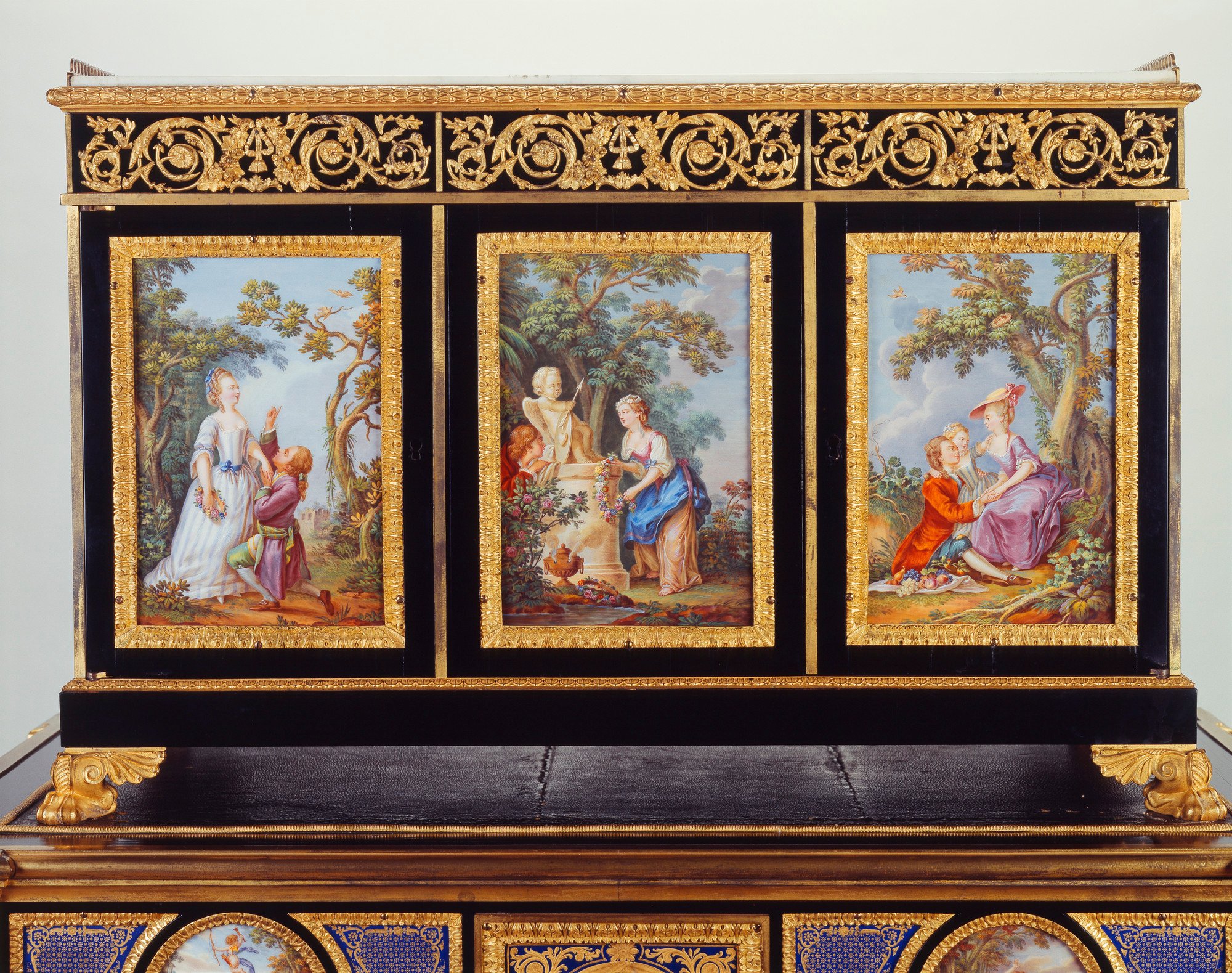George IV was not the first monarch to introduce French furniture into the Royal Collection. One hundred years earlier, Charles II (1630–85) and his advisors, the Earl of Arlington and the Duke of Montagu, had introduced the French court style to England by employing French craftsmen. Charles II had experienced first-hand the style and grandeur of the court of his cousin Louis XIV (1638–1715) and hoped to emulate him.
In a similar vein, George IV surrounded himself with French craftsmen and designers from the moment he began to modernise his London residence, Carlton House. Under the general direction of the interior decorator, Guillaume Gaubert, and later under the marchand-mercier (dealer-decorator), Dominique Daguerre, George IV secured a number of pieces of contemporary French furniture including, for example, a set of elbow chairs made by the leading Parisian menuisier (chair-maker) of the time, Georges Jacob (1739–1814).
Following the French Revolution (1789–99), large quantities of seventeenth and eighteenth century works of art confiscated from émigrés and royalists came onto the market. George IV took full advantage and sent a number of agents to France, including his cook, Louis Weltje, and his confectioner, François Benois, in search of appropriate acquisitions. In addition to extraordinary objects of the Ancien Régime, he amassed the greatest collection of Sèvres porcelain, including the dinner service made for Louis XVI (1754–93).
The Napoleonic Wars (1803–15) subsequently placed restrictions on this trade, as Napoleon set in place the the Continental Blockade, cutting off Britain from continental Europe. However, a number of French craftsmen, including furniture-maker Jacob-Desmalter and bronze manufacturer P-P. Thomire, received authorisation from Napoleon to trade with the enemy.
In 1824 George IV began to renovate the private apartments at Windsor Castle. He took a personal interest in the decoration and furnishing of these rooms. Although his London residence, Carlton House, was demolished in 1825, most of its furnishings were intended for the concurrent transformation of Buckingham House into Buckingham Palace. Therefore, to furnish the new apartments at Windsor, George IV’s existing collection needed to be supplemented by new purchases.
Many of these purchases came from the Watson Taylor sale at Christies in 1825. Watson Taylor shared George IV's tastes for French furniture and over the years the two collectors even used the same dealers. George IV's most notable purchases from the sale include pieces by the Parisian ébénistes (cabinet-makers) Jean-Henri Riesener and brothers Pierre-Antoine (1757–1827) and Louis-François (1796–1861) Bellangé. Many of these pieces featured in Morel and Seddon’s ‘miniature designs’ that were sent to the king for approval.
George IV’s tastes in French furniture were particularly broad, encompassing seventeenth century cabinets by Boulle (cabinet-maker to the court of Louis XIV) as well as the works of contemporary makers such as Bellangé and Jacob-Desmalter. He had a particular fondness for furniture mounted with porcelain or pietra dura plaques as well as for seeking out works of art once owned by Napoleon. However, despite diverse origins and materials, all objects demonstrate George IV's taste for the extravagant.
Click on an object below to learn more about George IV's eclectic tastes in French furniture.








